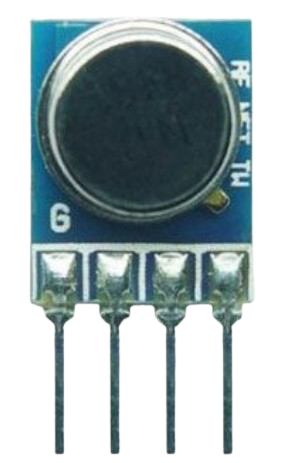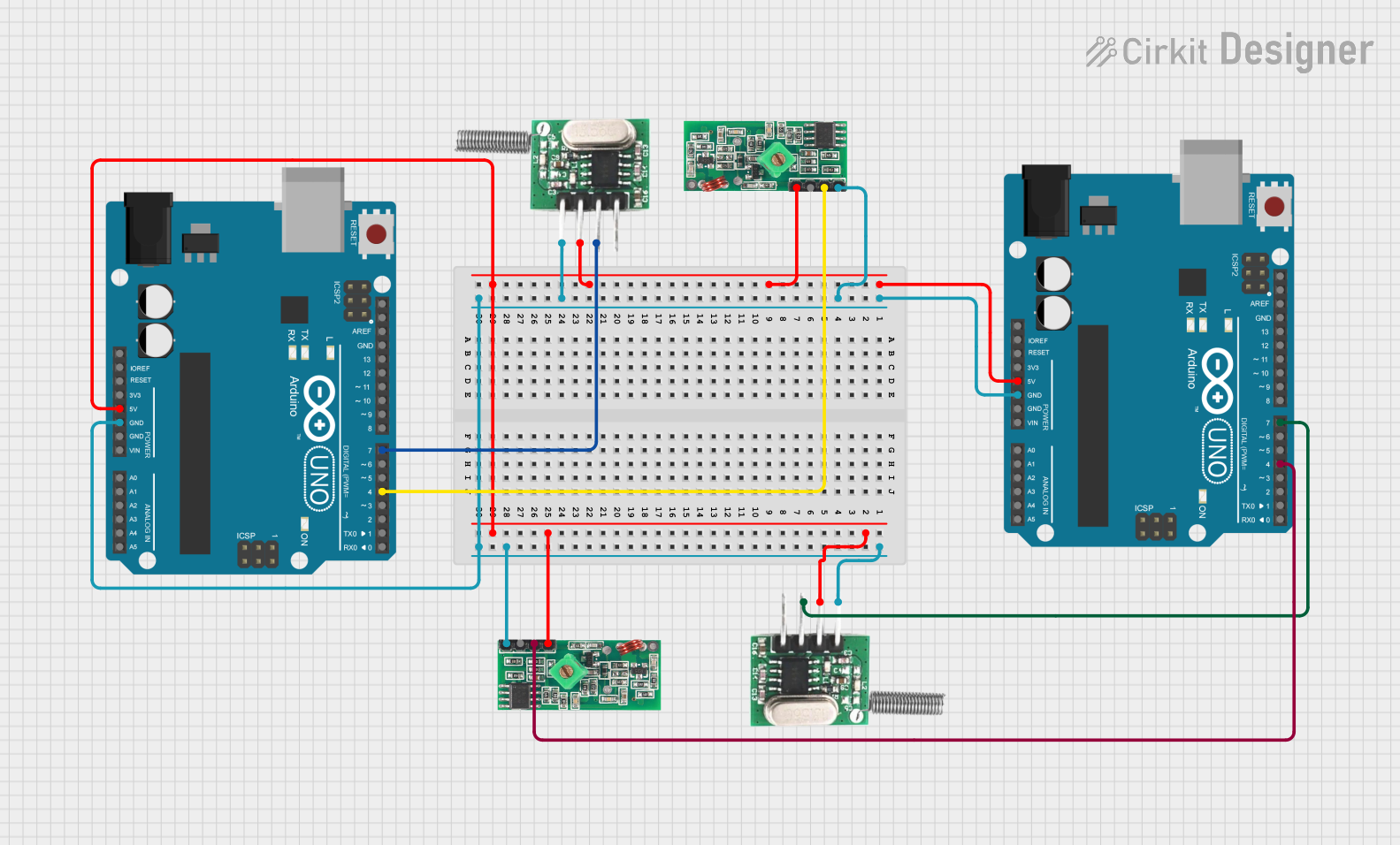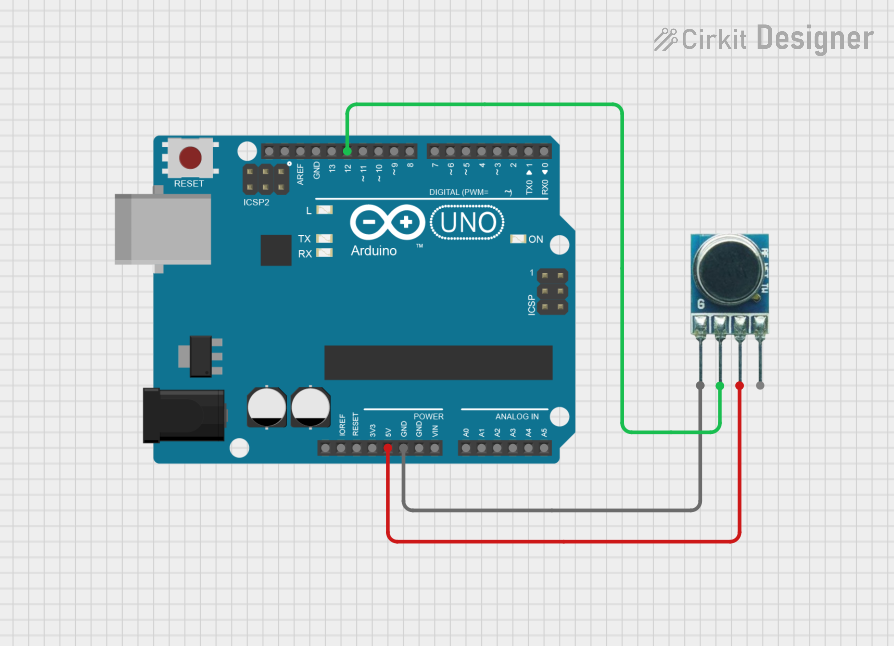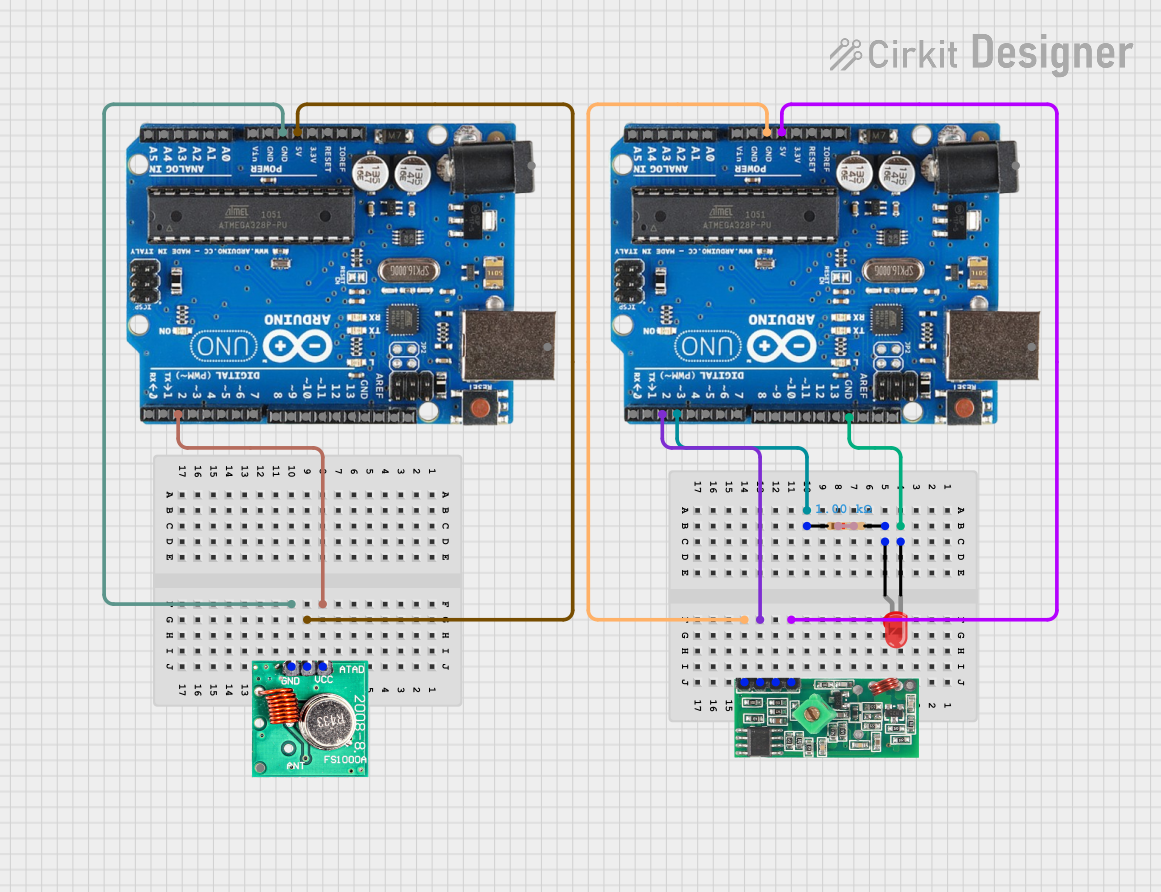
How to Use 433MHz RF Transmitter: Examples, Pinouts, and Specs

 Design with 433MHz RF Transmitter in Cirkit Designer
Design with 433MHz RF Transmitter in Cirkit DesignerIntroduction
The 433MHz RF Transmitter module is a compact and efficient wireless communication device that operates at the radio frequency of 433MHz. It is widely used for short-range communication in various applications such as remote control systems, home automation, wireless sensor networks, and telemetry. The module is favored for its simplicity, low power consumption, and ability to transmit data over distances typically up to 100 meters in open space.
Explore Projects Built with 433MHz RF Transmitter

 Open Project in Cirkit Designer
Open Project in Cirkit Designer
 Open Project in Cirkit Designer
Open Project in Cirkit Designer
 Open Project in Cirkit Designer
Open Project in Cirkit Designer
 Open Project in Cirkit Designer
Open Project in Cirkit DesignerExplore Projects Built with 433MHz RF Transmitter

 Open Project in Cirkit Designer
Open Project in Cirkit Designer
 Open Project in Cirkit Designer
Open Project in Cirkit Designer
 Open Project in Cirkit Designer
Open Project in Cirkit Designer
 Open Project in Cirkit Designer
Open Project in Cirkit DesignerCommon Applications and Use Cases
- Remote control for garage doors, gate openers, and home security systems
- Wireless data transmission for weather stations
- Home automation for controlling lights, heating, and air conditioning
- Telemetry for unmanned aerial vehicles (UAVs) and hobbyist projects
- Communication between Arduino or other microcontroller-based systems
Technical Specifications
Key Technical Details
- Operating Frequency: 433MHz
- Supply Voltage: 3V to 12V DC
- Operating Current: 10mA (at 12V)
- Output Power: 10mW to 50mW (adjustable with supply voltage)
- Modulation: Amplitude Shift Keying (ASK)
- Communication Range: Up to 100 meters (open space, antenna dependent)
- Operating Temperature: -20°C to +70°C
Pin Configuration and Descriptions
| Pin Number | Pin Name | Description |
|---|---|---|
| 1 | VCC | Power supply (3V to 12V DC) |
| 2 | GND | Ground |
| 3 | DATA | Data input for modulation |
| 4 | ANT | Antenna connection (typically a 17cm wire) |
Usage Instructions
How to Use the Component in a Circuit
- Connect the VCC pin to a power supply within the range of 3V to 12V DC.
- Attach the GND pin to the common ground of your circuit.
- The DATA pin should be connected to the signal you wish to transmit. This is typically a digital output from a microcontroller.
- Connect a 17cm wire to the ANT pin to serve as an antenna. The length of the wire is crucial for optimal transmission at 433MHz.
- Ensure that the power supply is stable and free from noise, as this can affect the quality of transmission.
Important Considerations and Best Practices
- The antenna should be as straight as possible to maximize the effective range.
- Avoid placing the transmitter near metal objects or electronic devices that may cause interference.
- The supply voltage affects the output power and range. Higher voltages increase range but also power consumption.
- Use a matching 433MHz RF Receiver to ensure compatibility and optimal performance.
- Keep the transmitter away from moisture and extreme temperatures.
Example Arduino UNO Connection and Code
// Include the RadioHead Amplitude Shift Keying library
#include <RH_ASK.h>
// Create an instance of the ASK object
RH_ASK rf_driver;
void setup() {
// Initialize ASK object
if (!rf_driver.init()) {
Serial.println("init failed");
}
}
void loop() {
const char *msg = "Hello World";
rf_driver.send((uint8_t *)msg, strlen(msg));
rf_driver.waitPacketSent();
delay(1000); // Wait for a second before sending the next message
}
Note: The RadioHead library is required for this code. Install it using the Arduino Library Manager.
Troubleshooting and FAQs
Common Issues Users Might Face
- No Signal Transmission: Ensure the antenna is properly connected and the power supply is within the specified range.
- Short Range: Check the antenna length and orientation. Increase the supply voltage for higher power output if necessary.
- Interference: Try changing the location of the transmitter or receiver to avoid obstacles and sources of electromagnetic noise.
Solutions and Tips for Troubleshooting
- Verify all connections and solder joints are secure and correct.
- Test with a known working receiver to rule out transmitter issues.
- Use a multimeter to check the power supply voltage at the VCC pin.
- Ensure that the microcontroller's digital output is functioning correctly by connecting an LED.
FAQs
Q: Can I use multiple transmitters in the same area? A: Yes, but you may need to implement a protocol to avoid signal collision and interference.
Q: What is the maximum range I can achieve with this transmitter? A: The range depends on many factors, including supply voltage, antenna design, and environmental conditions. Under ideal conditions, the range can be up to 100 meters.
Q: Is it legal to use the 433MHz frequency for communication? A: The 433MHz band is commonly used for low-power devices and is license-free in many countries, but always check your local regulations.
Q: Can I connect this transmitter directly to an Arduino UNO? A: Yes, you can connect the DATA pin to a digital output on the Arduino UNO and use the example code provided to transmit data.